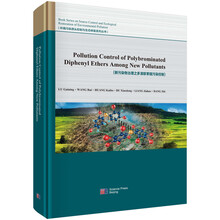1 Introduction to Nanomaterials and Nanotechnology
1.1 Introduction
1.2 Classification of Nanomaterials
1.2.1 0-D Nanomaterials
1.2.2 1-D Nanomaterials
1.2.3 2-D Nanomaterials
1.2.4 3-D Nanomaterials
1.3 Nanotechnology
1.3.1 Scientific Vision and Compliance in the Field of Nanotechnology
1.3.2 Frontiers of Nanotechnology and the Vision for the Future
1.3.3 The Vision and Advancements in the Field of Nanotechnology
1.3.4 The Future of Nanotechnology
1.4 Environmental Nanotechnology
1.4.1 Green Nanotechnology
1.4.2 The Aim of Applying Nanotechnology in the Environment
1.5 Major Application of Environmental Nanotechnology
1.5.1 Air Purification
1.5.2 Water Purification
1.5.3 Nano Bioremediation
1.5.4 Soil Structure and Remediation
1.5.5 Future Prospects
References
2 Physical Synthesis Methods of Nanomaterials
2.1 Introduction
2.2 Sol-Gel Technique
2.3 Hydrothermal Technique
2.4 Emulsion-Solvent Evaporation
2.5 Solvent Displacement/Precipitation
2.6 Ball Milling or High-Energy Ball Milling
2.7 Sonochemical Synthesis
References
3 Chemical Synthesis Methods of Nanomaterials
3.1 Introduction
3.2 Chemical Reduction
3.3 Dialysis
3.4 Emulsification/Solvent Diffusion
3.5 Polymerization
3.6 Coacervation or Ionic Gelation
3.7 Chemical Co-Precipitation
References
4 Biological Synthesis Methods of Nanomaterials
4.1 Introduction
4.2 Plant-Mediated Synthesis of Nanomaterials
4.3 Silver Nanomaterials
4.4 Synthesis of Iron Nanoparticles
4.5 Nickel Nanoparticles
4.5.1 Synthesis of Nickel Nanoparticles Using Alfalfa Leaves
4.5.2 Synthesis of Nickel Nanoparticles Using Azadirachta Indica
4.6 Zinc Oxide Nanoparticles
4.7 Cadmium Oxide Nanoparticles
4.8 Copper Oxide Nanoparticles
4.9 Synthesis of TiO? Nanoparticles Using Planomicrobium sp
4.10 Synthesis of Silver Nanoparticles Using Yeast
4.11 Nanoparticle Synthesis Using Algae
4.11.1 Synthesis of Silver Nanoparticles Using Algae
4.11.2 Synthesis of Zinc Oxide Nanoparticles Using Brown Marine Macroalga Sargassum Muticum
References
5 Characterization and Properties of Nanomaterials
5.1 Introduction
5.2 Structural Characterization
5.2.1 X-ray Diffraction (XRD)
5.2.2 Small Angle X-ray Scattering (SAXS)
5.2.3 Scanning Electron Microscopy (SEM)
5.2.4 Transmission Electron Microscopy (TEM)
5.2.5 Scanning Probe Microscopy (SPM)
5.2.6 Gas Adsorption
5.3 Chemical Characterization
5.3.1 Optical Spectroscopy
5.3.2 Electron Spectroscopy
5.3.3 Ionic Spectrometry
5.4 Physical Properties of Nanomaterials
5.4.1 Melting Points and Lattice Constants
5.4.2 Mechanical Properties
5.4.3 Optical Properties
5.4.4 Electrical Properties
References
6 Application of Nanotechnology in Environmental Analysis and Monitoring
6.1 Introduction
6.2 Nanomaterial-Based Biosensors for Detection of Pesticides and Explosives
6.2.1 Introduction
6.2.2 Nanomaterial-Based Biosensors for Pesticides
6.2.3 Nanoparticle-Based Electrochemical Immunoassay of TNT
6.3 Advanced Nanosensors for Environmental Monitoring
6.3.1 Development of Nanostructured Sensing Materials
6.3.2 Biosensing Applications of Nanostructured Materials
References
7 Application of Nanotechnology in Environmental Pollution Control
7.1 Introduction
7.2 Application of Nanotechnology in Water Purification
7.2.1 Detection and Extraction of Pesticides from Drinking Water Using Nanotechnology
7.2.2 Nanotechnology for Contaminated Subsurface Remediation
7.2.3 Nanostructured Visible-Light Photocatalysts for Water Purification
7.2.4 Nanotechnology-Based Membranes for Water Purification
7.3 Application of Nanotechnology in Air Purification
References
8 A
展开










